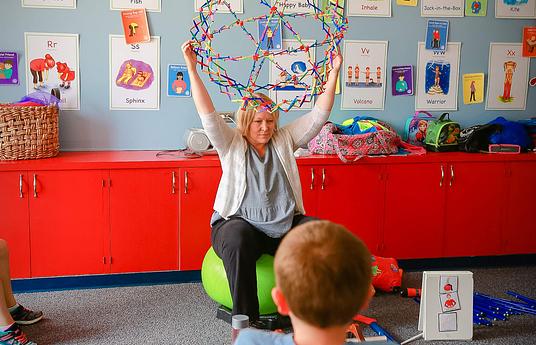It was recently reported that there’s been a 57% increase in homeschooling for students with special needs in the UK – with fears that this could reflect a failure on the part of mainstream schools to meet the needs of such learners.
Adjustments are often made (and are required by law) for different special needs in schools, such as installing wheelchair ramps or giving children extra time in examinations, but these cater only to a student’s basic needs.
It is not enough to just enable access to education, we must also ensure children can thrive there. Just like their peers, children with additional needs also have the need to experience excitement, wonder and pure joy in their education.
While most teachers strive to make the learning environment as accessible and enjoyable as possible, lack of resources, clear structure or informed understanding of complex needs can mean a child’s experience varies wildly from teacher to teacher and classroom to classroom. One lesson might be a safe and welcoming space, fully equipped to bring out the best in that child, whilst navigating rowdy PE classes and chaotic corridors could be a waking nightmare.
Sometimes a more holistic, integrated, whole school approach can be exactly what is needed to ensure every learner can experience joy and triumph throughout the school day. Hanover Elementary School in Meriden, Connecticut, is one school carving out a safe and stimulating space for students with autism and other special needs to relax, rebalance and receive any sensory stimulation they require to flourish in class.
The ‘Sensation Station’ Sensory Room at Hanover School is a colourful, thoughtfully designed space that gives children and staff appropriate strategies and tools to enable them to thrive as active, calm learners within their school and community. It provides tactile, auditory, vestibular, proprioceptive and kinesthetic input as well as stimulating smell, sight and self awareness through small group instruction, mindful breathing, yoga postures and specially equipped stations throughout the space.
Fully integrated into school culture, the sensory room is timetabled into the school day and classroom learning is also punctuated with scheduled sensory breaks to ensure the benefits gained from the sensory room, such as improved focus and greater retention, are maximized.
Just like their peers, children with additional needs also have the need to experience excitement, wonder and pure joy in their education.
"
While not every school may have the space for a dedicated sensory room, its creators believe its program and philosophies can be used in all schools with a little creativity!
But what happens when joyful design extends beyond the realm of one room? Meet Hazelwood School, an educational establishment in Glasgow, Scotland, designed specifically for children with autism and dual sensory impairment.
Some schools resemble office blocks, or worse, prisons, meeting the clinical and educational needs of children but not exactly making them feel valued. Alan Dunlop, the architect behind Hazelwood, took the opportunity of designing a school from scratch to inject warmth and joy into every aspect of the building. Dunlop blended utility with beauty to create a space that would meet the physical needs of the students, while also providing them with a vibrant and inspiring place to learn.
The needs of the students were central to the design. This is evident in details such as bright visual cues, like coloured glass, throughout the building so visually impaired students can navigate independently, plus plentiful storage integrated in classroom walls to house wheelchairs and other aids. Other touches add to the delightful, homely ambiance, such as beautiful sensory gardens and the use of cork on the corridor walls – chosen for its tactile and olfactory qualities to provide navigation cues and sensory input.
Staff have observed how the building design has had a positive impact on the students’ learning and the atmosphere within the school. Vincent Ferguson, Deputy Head, explains, “Having the framework of such an excellent building makes all of our jobs so much easier. I still get a lift from walking through the doors each morning, with a recognition that I am extremely privileged to work in this fine structure and with these amazing people and children.”
Thoughtfully designed spaces such as these just go to show how far reaching even small changes can be. Children of all abilities can have a more joyous experience of school when we make school a place that anyone would want to be. A place that stimulates all of our senses and echoes in every corridor and corner ‘you are safe’, but more than that; ‘you are valued’.




